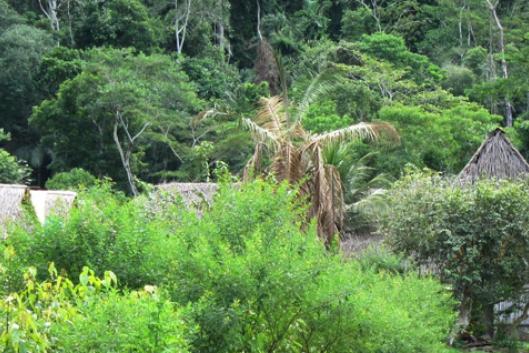This last World Rainforest Movement bulletin of the year 2014 focuses on an issue that is somehow present in all of the local struggles and related issues that this bulletin informs you about every month. Although it is not specifically about a forest or tree plantation-related issue, it is about something that involves forest-dependent communities and that we feel is very important to dedicate an entire WRM bulletin to: the complex debate about alternatives.
As many of us are involved in struggles against forest-destructive projects, we all have often experienced a situation in which a company or state representative questions us when we oppose a certain project, demanding to know: “What is your alternative?” In this bulletin, we try to address this somewhat intimidating question from different angles in order to show not only its complexity but also to offer some ideas about how to deal with this question and the “alternatives” debate in general in our daily practice.
As Larry Lohmann shows in his article, when we eventually try to respond to the demand placed on us to provide an “alternative”, we are often also forced to formulate our alternative within the logic of the hegemonic production model. As we know, this model exists to serve a very high level of material consumption for a minority in the world, which often lives far away from where most of the damage is done. Larry suggests that we should first of all question the demand posed on us, for example, by counter-questioning with queries such as “alternative to whom?” and “at whose expense?”
We should also continue our efforts to see through, reflect on and reply to the language used and imposed on us by those who push most for – and benefit most from – the big forest-destructive projects. For decades, companies, consultants, state officials, the mainstream media, etc., have argued that they have the “alternatives”, the “solutions”, to the diverse crises that our societies are facing. About 20 years ago, they talked about “sustainable development” as an “alternative” to the mainstream development model. In recent years, because the problems persisted despite two decades of implementing “sustainable development” policies and projects, they started talking about the “green economy” and of “putting a price on nature” as the new “alternatives”. Such “alternatives” are adopted and promoted by UN bodies, by almost every government and every transnational corporation, while in practice, nothing structurally changes. It seems then that thinking up and proposing “alternatives” have become, more than anything else, simply part of the same model to which these are meant to provide “alternatives”.
But is there an alternative to the debate/demand for “alternatives”? An interesting experience is recounted in the article by Adolfo Maldonado from Ecuador, about how to deal with the situation faced by many thousands of communities around the global South who find themselves facing a major crisis in many respects as a result of years of destructive activities in and around their homes; in the case of Ecuador, these activities involve the oil industry and monoculture fruit-tree plantations. For years, Adolfo worked with an affected community through a so-called “Environmental Clinic” – an initiative of the organization Acción Ecológica based on the belief that when nature is “sick”, then people will also be “sick”. In the community involved in this initiative, the alternative to “alternatives” came to be called alteractive energy, referring to an energy capable of changing the lives of the people in the community for the better.
In practice, around the globe, a lot of unique experiences are taking place in many countries at the very local level that share the common daily need of people to change their lives for the better, despite an often adverse situation of a large-scale destructive project nearby. Such experiences are pushed forward by people in the communities, by women’s and youth groups, by organizations working around culture and by social movements, to give just a few examples.
Another example is the story of the challenge in a country as complex as India to transform the diverse efforts to change the lives of the people in the community for the better into a bigger political movement for social change and radical transformation. It is impossible then not to touch on the huge obstacles and challenges that arise, when it comes to looking for alternatives capable of changing people’s lives for the better in a country that is – like most of our countries – dominated by state power, by a capitalist regime which serves to the benefit of transnational corporations that control the market economy. How is it possible to build “alternatives” within a single, dominant model that continues destroying ways of life and cultures?
So the challenges are huge and, as we also address in one of the following articles, especially for women. The article address the issue of the challenge for feminists from the global South to look for new ways of feminism that better recognizes the realities of the majority of women affected by the aforementioned destructive model and who suffer from multiple oppressions, including of being a woman. Facing this challenge also means to overcome the fragmentation of the analyses that are done as well as the fragmentation of our struggles.
All in all, we hope this bulletin is a small but nevertheless valuable contribution to this complex but necessary debate. We invite you to share your views and also your experiences around the issue. And of course, we hope you enjoy reading it!
